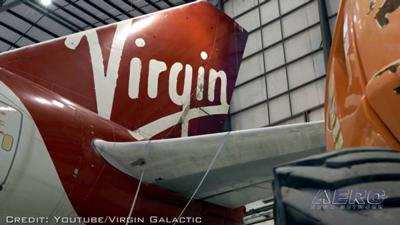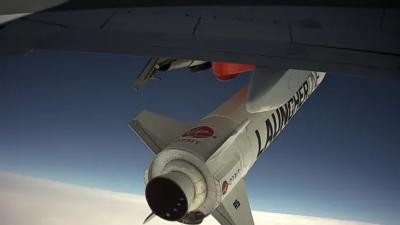A Victory Most Pyrrhic
Founded in 2017 to provide launch services for small satellites, Virgin Orbit was a subsidiary of ultra-hip British billionaire, entrepreneur, commercial astronaut, and business magnate Sir Richard Branson’s Virgin Group. The company’s principal offering was its LauncherOne rocket, an air-launched, two-stage orbital launch vehicle designed to carry smallsat payloads of up to 660-pounds (300-kilograms) into Sun-synchronous orbit (SSO) following air launch from a Boeing 747 carrier aircraft dubbed Cosmic Girl.

LauncherOne attained orbit for the first time on 17 January 2021, successfully deploying ten cubesat satellites. On 30 March 2023, in a regrettable instance vividly illustrative of the fierce competitiveness within the nascent commercial space-launch sector, Virgin Orbit announced it would shut down operations and lay-off 675 of its 775 employees after failing to secure what a company representative called “meaningful funding.” Virgin Orbit CEO Dan Hart made the fateful announcement during a Thursday, 30 March 2023 all-hands company meeting.
In addition to limited liquidity and a high-risk operational ethos, Virgin Orbit’s demise is attributable to the failure of an 09 January 2023 launch attempt that saw a specimen of the company’s LauncherOne rocket experience an anomaly which led to the premature shutdown of the rocket’s second-stage engine and a subsequent failure to attain orbit.
Within hours of the rocket’s loss, Virgin Orbit—primarily in the persons of aerospace veteran Jim Sponnick and company chief engineer Chad Foerster—got about the dreary business of investigating the failure. Oversight of the investigation was the shared province of the U.S. Federal Aviation Administration and the U.K. Air Accidents Investigation Branch. Personnel of the U.S. Department of Defense (DOD), National Transportation Safety Board (NTSB), National Reconnaissance Office (NRO), and the U.K. Civil Aviation Authority also took part in the investigative process.

In February 2023, investigators confirmed Virgin Orbit had correctly executed pre-flight preparations, carrier aircraft takeoff, captive carry flight, and rocket release. The LauncherOne vehicle’s ignition, first-stage flight, stage separation, second-stage ignition, and fairing deployment had all been nominal.
Investigators further determined that a fuel filter within the failed LauncherOne rocket’s first-stage fuel feedline had dislodged from its normal position.
Additional data indicated fuel-line occlusion attributable to the dislodgment of the aforementioned filter caused a downstream fuel pump to operate at degraded efficiency, thereby starving the rocket’s Newton 4 engine of fuel. Performing anomalously in the absence of cooling fuel, subject engine exceeded its design temperature rating. Overheating spread rapidly, causing adjacent components to malfunction. The contemporaneous occurrence of fuel-starvation, engine overheating, and peripheral component failure occasioned premature termination of the rocket’s second-stage thrust, which precluded, in turn, the launch vehicle’s continued ascent.
Deprived of thrust, the LauncherOne rocket’s second stage and payload fell to Earth.
On 19 April 2023, Virgin Orbit completed the full-scale test series by which investigators verified the root cause of the 09 January launch failure and presented a modification designed to address such.

Investigators recreated flight conditions and demonstrated the dislodging and subsequent travel of the fuel filter into the Newton-4 engine. The high-fidelity test article included all the key elements of the fuel feed system up to the engine inlet.
Ground test results matched flight data, thereby confirming the dislodging of the filter as the initiation event of the 09 January launch failure. A series of nine tests verified the performance of a redesigned filter.
The investigation comprised a standard fault tree methodology, a hyper-detailed timeline, and additional and equally-pedantic means and products. All potentially credible scenarios were investigated. The modified fuel-system design—which has been verified through testing—was to have been incorporated into the Company’s next LauncherOne rocket.
Prior to the U.K. mishap, LauncherOne had performed to specifications over the entirety of four operational flights, accurately delivering 33 payloads to their required orbits.

Richard Branson, since November 2022, has pumped some $60-million of his own money into Virgin Orbit through Virgin Investments Ltd. Branson’s latest investment, a sum of $5-million, was posted 03 March.
Nineteen days after Branson’s first cash infusion, Virgin Orbit announced it had abandoned plans to sell additional public stock “due to current market conditions.”
Virgin Investments Ltd.’s $25-million investment in November 2022 came three days prior to Virgin Orbit reporting $30.9-million in third quarter revenues against a net loss of $43.6-million. The company’s net loss was a hefty $139.5-million—representing an average monthly loss of $15.5-million for the first nine months of 2022. Virgin Orbit has yet to make public its fourth-quarter 2022 financials.
Virgin Orbit’s cash and cash equivalents dwindled from $194.2-million at the end of 2021 to a mere $71.2-million at the end of 2022’s third quarter.
Virgin Orbit reportedly spent $1-billion developing the technologies, equipment, and infrastructure by which it valiantly tried and tragically failed to carve out a niche in the dog-eat-dog imbroglio that is the nascent, commercial space-launch business.
 Sierra Space Repositions Dream Chaser for First Mission
Sierra Space Repositions Dream Chaser for First Mission ANN's Daily Aero-Term (05.10.24): Takeoff Roll
ANN's Daily Aero-Term (05.10.24): Takeoff Roll Aero-News: Quote of the Day (05.10.24)
Aero-News: Quote of the Day (05.10.24) Aero-News: Quote of the Day (05.11.24)
Aero-News: Quote of the Day (05.11.24) ANN's Daily Aero-Term (05.11.24): IDENT Feature
ANN's Daily Aero-Term (05.11.24): IDENT Feature






